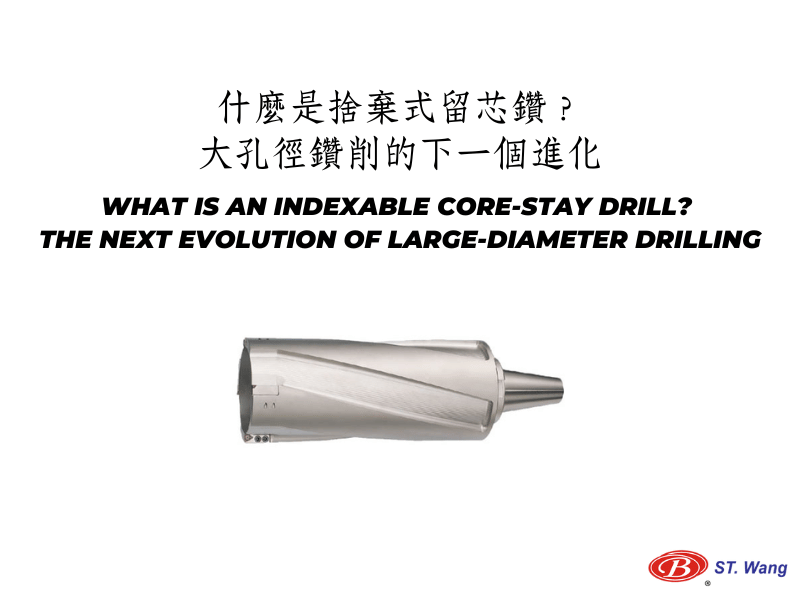Machining has always been about precision and speed. However, in the highly competitive manufacturing industry, efficiency has become an essential requirement. The tools you choose to use have an impact on your profits, whether you are producing parts for automotive, aerospace as well as high-tech electronic products. High-speed drills, tungsten carbide end mills and threading inserts are all important.

Image credit: stwang-tw.com
This isn’t merely an upgrade to the old tools. These new tools give you an efficient method of working, which decreases downtime, lowers costs and gives better results making use of less effort. Let’s look closer at how they can aid companies drill faster, cut more precisely and finish quicker.
Indexable Drills: More Holes, Less Hassle
Until recently, drilling large holes was time-consuming and expensive. Solid drills often needed to be sharpened, wore quickly and slow the process. A lot of machinists are using the indexable drill. When the drill becomes dull, instead of having to replace the entire tool, you can just change the cutting inserts.
Indexable drills are known for their efficiency. They’re made for long runs, heavy-duty performance as well as easy maintenance. Reusable inserts help cut down on inventory and waste, while extending the life of the machines. SHANG TZANG WANG ENTERPRISE Co. Ltd. provides disposable drills that perform consistently, even in large diameter applications. This upgrade will reduce the time to repair for shops who perform repeated hole machining.
High Speed Drills, Designed to meet the needs of today’s customers
In an situation where speed is vital, high-speed drills allow you to get the job done quickly without sacrificing precision. They are perfect for materials that are tough and have quick cycle times. They are used in all kinds of medical devices, from precision to large-volume automotive components.
Modern high-speed drills feature advanced coatings and optimized flute designs that minimize friction and heat buildup and extend the life of the tool. This means less breaks, fewer tool replacements, and a greater number of parts. For any machinist who’s felt the frustration of a broken drill mid-cycle, switching to a high speed drill can feel like a revelation.
Tungsten Carbide End Mills: Reliable Performance Cut After Cut
When it comes to milling end mills made of tungsten are the most reliable tools on the shop floor. End mills’ toughness and resistance to heat make them a popular choice to cut through tough materials. They deliver consistently good results, whether finishing small corners or roughing large areas.
Their versatility is what makes end mills made of tungsten carbide so distinctive. The different coatings, helix angles, and flute count are tailored to meet the requirements of a range of jobs, from aluminum to titanium. Carbide endmills are great for those who need to be able to balance durability and precision.
Threading Inserts: Tiny Tools, Big Impact
Threads may seem to be only a tiny part of the process, but it’s one of the most crucial. A bad thread could ruin the entire piece. This is why having a top quality threading insert is essential. These small, interchangeable instruments are designed to cut threads on either the exterior or the inside of the nut with accuracy and repeatability.
The threading inserts for threading are more reliable than conventional taps or dies. They provide the same results after many cycles. When one edge dulls simply index it to the next point of cutting and you don’t need to remove the tool or regrind. This is a quick efficient, cost-effective, and simple method of doing it. Not only do machinists appreciate threading inserts for their speed but also due to their reliability. With the correct insert you are assured that the threads will be inserted correctly the first time no second runs, no need for reworking and you don’t have to worry about part rejection.
The Bottom Line
In the modern world of machining, you can’t afford to lose time. Today’s most efficient shops are focusing on smarter and more flexible machines. The latest cutting tools don’t just increase accuracy, they streamline workflows, reduce changeovers, and increase the useful life of your equipment. The result? This means less time on troubleshooting so that more time is spent providing high-quality components. In a world where more competitive margins and increased demand are commonplace tools that perform more efficiently give manufacturers the competitive edge.